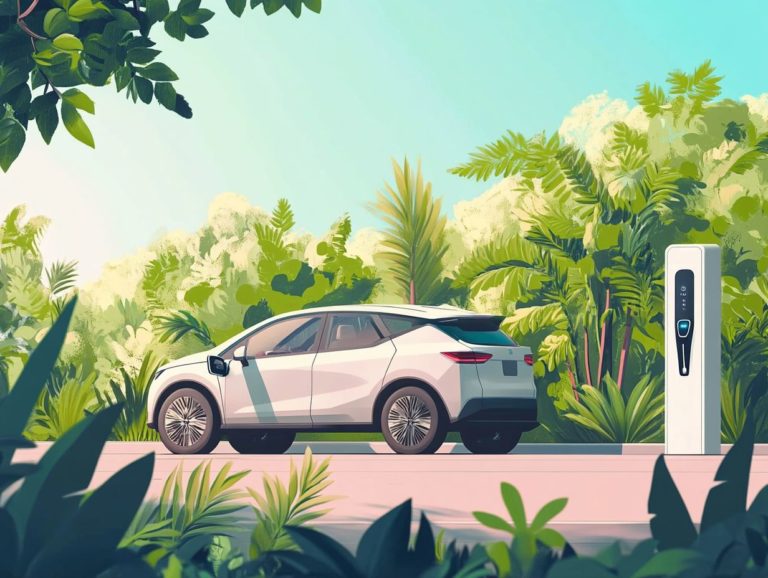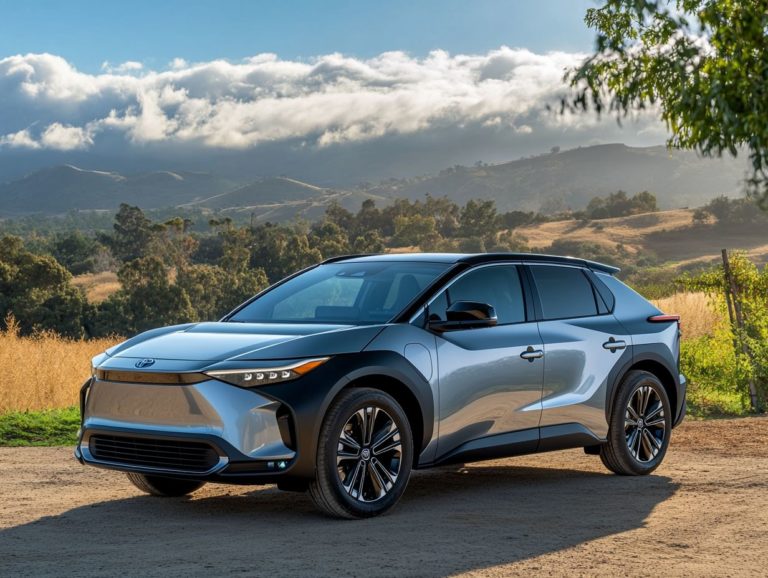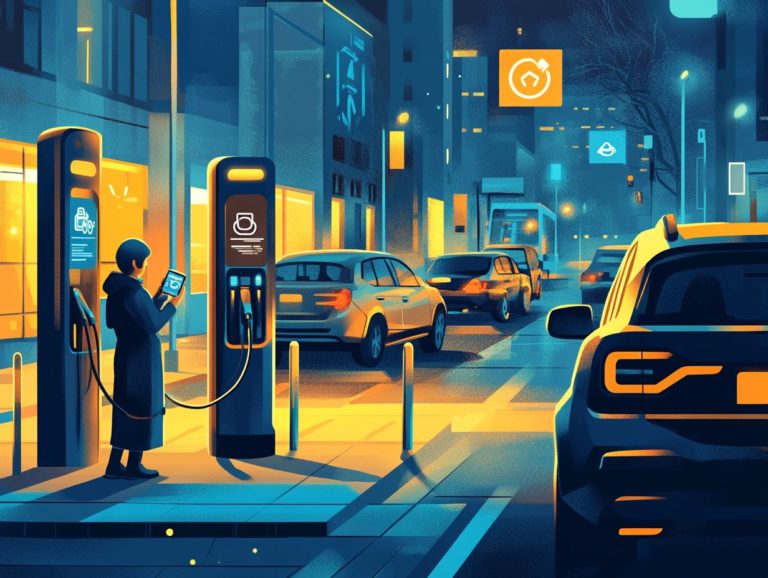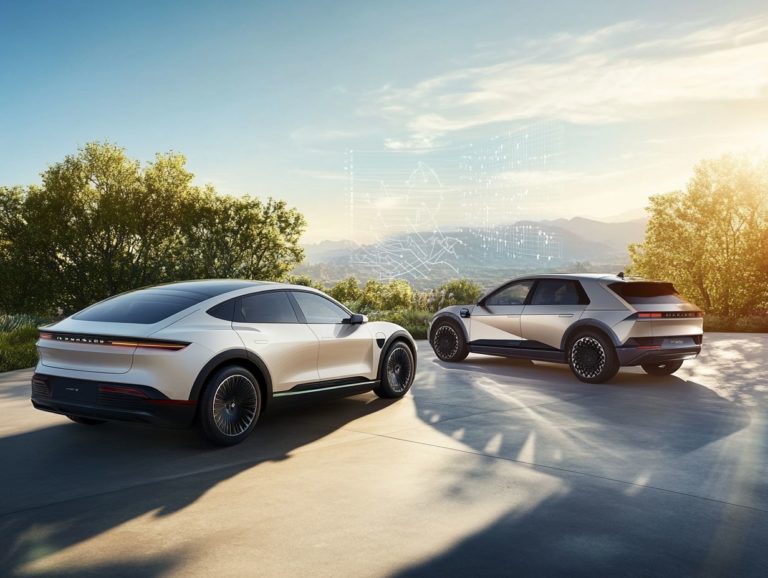5 Best Charging Solutions for Electric Cars
As electric vehicles (EVs) become increasingly popular, it’s crucial for you to grasp the various charging solutions available, whether you’re a newcomer or a seasoned owner.
This article delves into the five best charging options: Level 1, Level 2, DC Fast Charging, Wireless Charging, and Solar Charging. Each method comes with its own advantages and disadvantages, costs, and ideal scenarios for home or public use.
You’ll also discover insights into future developments in the charging landscape, empowering you to make informed decisions for an enhanced electric driving experience.
Contents
Key Takeaways:
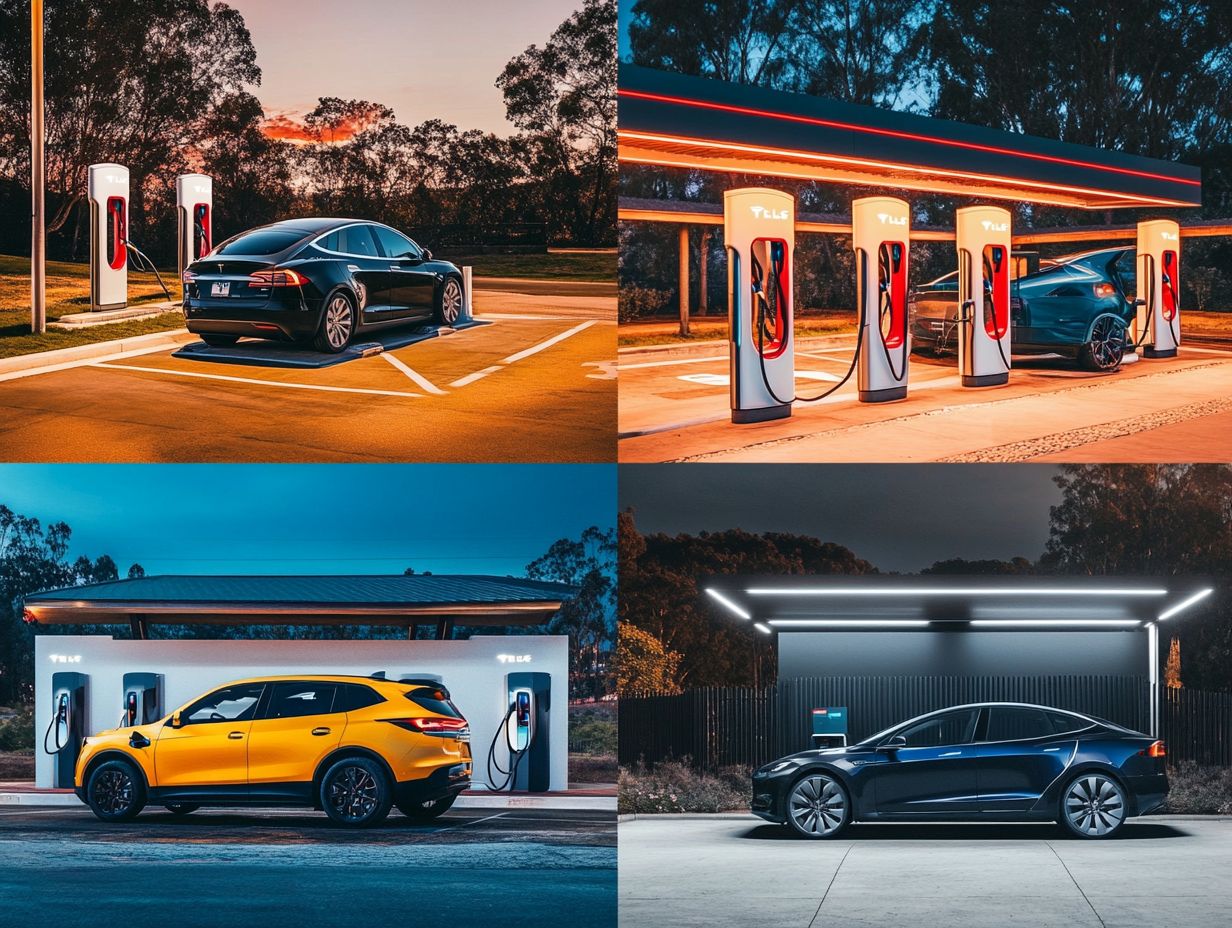
- Level 1 charging is the most basic and slowest form of charging for electric cars, but it is also the most accessible and affordable option for home charging.
- Level 2 charging provides faster charging times than Level 1 and is ideal for overnight home charging. It is widely available in public charging stations.
- DC fast charging is the quickest option for electric cars and is typically found in public stations, though it can be costly and may not fit all models.
1. Level 1 Charging
Level 1 charging is the simplest way to power up your electric vehicle, using a standard 120-volt outlet. It s a convenient and budget-friendly option for many EV owners who prefer to charge at home without the hassle of extensive installations or electrical upgrades.
This method offers a simple setup, but it does come with slower charging speeds compared to Level 2 or DC fast charging options. With a Level 1 charger, you can typically gain about 4 to 5 miles of range per hour. This makes it perfect for overnight charging, especially if you don t drive frequently.
If you re planning longer trips, you might find Level 2 chargers more appealing, as they can provide anywhere from 10 to 60 miles of range per hour. For those in a real hurry, DC fast chargers can work wonders, delivering a significant charge in as little as 30 minutes.
The operational costs of Level 1 charging are quite attractive. Basic charging stations integrate easily into your existing electrical setups, transforming your garage into a practical and efficient charging hub.
2. Level 2 Charging
Level 2 charging is a game changer for electric vehicle owners. This setup utilizes a robust 240-volt power source, delivering faster charging times and enhanced performance compared to Level 1 chargers, making it the perfect choice for your home charging station.
By choosing a Level 2 charger, you can significantly cut down the time it takes to fully recharge your vehicle a notable advantage if your schedule is anything but forgiving.
Among the top options available, the Tesla Universal Wall Connector and Grizzl-E Smart EV charger shine with their innovative features and adaptability. The Tesla model is well-regarded for its reliability and smart technology, integrating seamlessly into home systems, while the Grizzl-E impresses with its versatility through various NEMA ratings standards for electrical plugs in homes that cater to different home electrical setups.
It s essential to ensure your electrical system can support your charger, as this directly influences your charging performance and efficiency.
3. DC Fast Charging
DC fast charging delivers the swiftest power for your electric vehicle, allowing you to replenish your battery significantly faster than with Level 1 or Level 2 charging. This makes it an essential part of the infrastructure for mass-market electric vehicles that need quick turnarounds during longer journeys.
This rapid power transfer is particularly vital for those who depend on their vehicles for daily commutes or extended trips. With charging speeds soaring up to 350 kW, DC fast charging stations can provide approximately 80% battery capacity in just 30 minutes a remarkable achievement compared to the several hours typically required for Level 1 charging, which relies on standard home electrical outlets.
While Level 2 stations are faster than Level 1, they still lag behind DC fast chargers, which often take between four to eight hours for a full charge. In urban areas, the availability of DC fast charging stations adds convenience, allowing you to make quick stops while running errands or during work, optimizing your time and encouraging a wider adoption of electric vehicles.
Ready to enhance your electric driving experience? Discover the 5 best electric SUVs for eco-conscious drivers and find the perfect charging solution for you today!
4. Wireless Charging
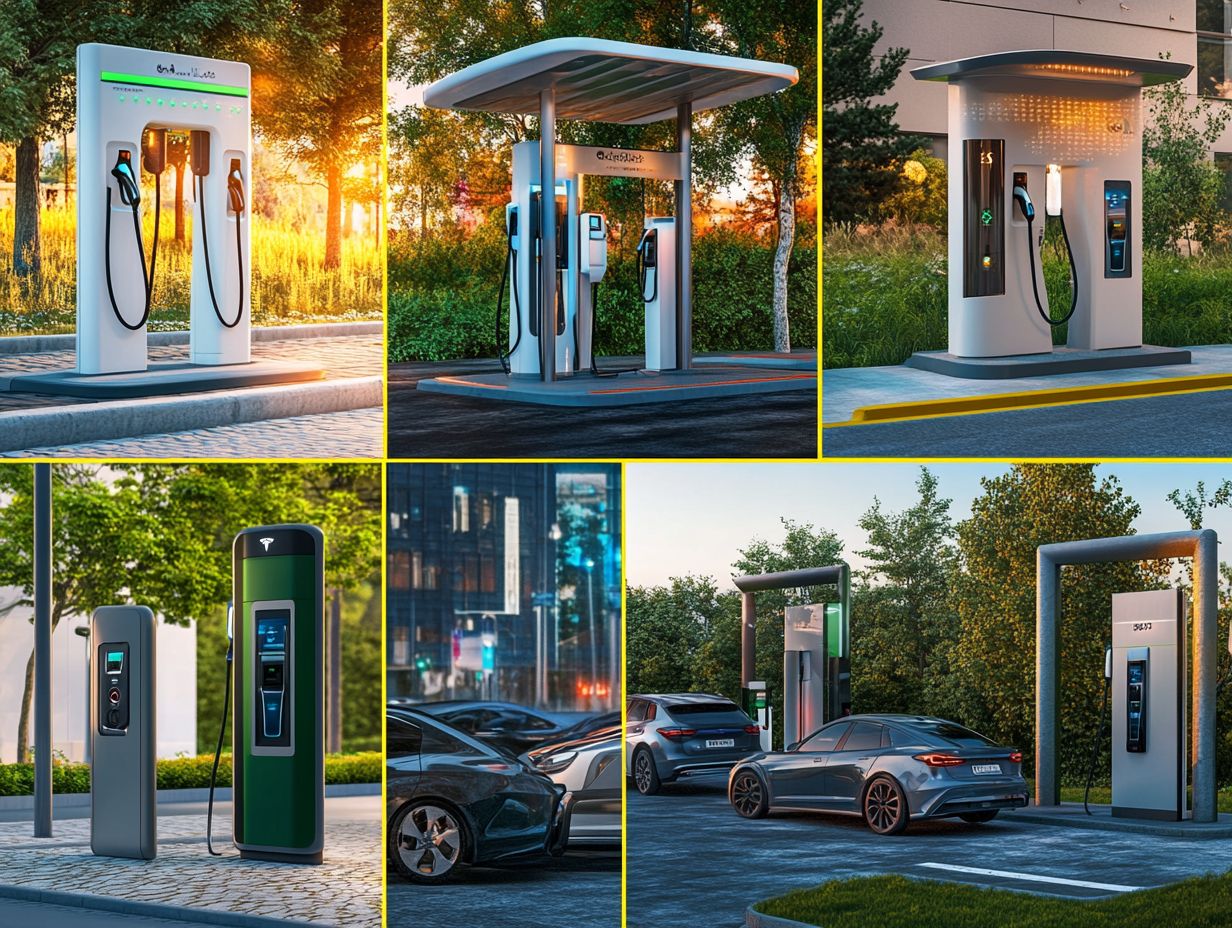
Wireless charging is a convenient and efficient way to recharge your electric vehicle. It eliminates the hassle of plugging in and offers faster charging options.
With this innovative method, you can simply park your vehicle over a designated charging pad. This allows for automatic energy transfer using magnetic technology, making the process effortless. As this technology continues to mature, more electric vehicle models are embracing compatibility, streamlining your charging routine.
Get ready for exciting developments in wireless charging! You will see faster charging capabilities and widespread infrastructure integration, changing the way you think about charging your EV. The convenience of wireless charging enhances your satisfaction and will drive significant increases in EV adoption rates, creating a more robust market landscape as this technology gains traction.
5. Solar Charging
Solar charging presents a sophisticated, eco-friendly solution for charging your electric vehicle. It allows you to harness renewable energy to power your EV, which is particularly beneficial if you consider options like the top electric cars for tech lovers, enhancing your home’s value and contributing positively to your vehicle’s battery maintenance.
By installing solar panels specifically designed for this purpose, you can significantly cut down on your overall energy costs. This is especially true when compared to conventional charging methods. The installation process typically involves a few key steps:
- Assessing your roof’s solar potential,
- Selecting the right panel technology,
- Connecting the system to your home charging station.
While the initial investment in solar panels may seem substantial, it pays off over time through long-term savings on electricity bills, along with potential tax incentives and rebates. Integrating solar charging with your home charging station simplifies the process and ensures you re optimizing the use of generated solar energy for your daily driving needs.
What Are the Different Types of Electric Car Charging?
Understanding the various types of electric car charging is essential for you as an EV owner. Each option presents unique benefits and limitations, from Level 1 charging to Level 2 EV chargers, DC fast charging, wireless charging, and solar charging solutions. This variety caters to different charging hardware needs and user preferences.
These charging options significantly shape your overall experience and the practicality of owning an electric vehicle. For example, Level 1 charging is ideal for home use, offering a convenient yet slower alternative. In contrast, Level 2 chargers ramp up the charging speed, making them popular at public stations. If you’re frequently on the go, DC fast charging enables quick refills during brief stops.
Wireless charging technology and solar solutions bring innovative conveniences, though they may come with higher installation costs or varying availability. By exploring these features, advantages, and challenges, you can gain a clearer understanding of how each charging type fits your needs as a mass-market electric vehicle user.
What Are the Pros and Cons of Each Charging Solution?
When evaluating the pros and cons of various electric vehicle charging solutions, consider key factors such as convenience, installation options, charging speeds, and overall costs. This thoughtful analysis helps you align your unique needs with available technologies, ultimately impacting how well your vehicle performs and your cost management.
Level 1 charging is the most accessible and budget-friendly option. However, it might not deliver the speed you require if you drive frequently. Level 2 charging offers a quicker alternative, but it often comes with higher installation costs and added complexity.
DC fast charging is noteworthy for its rapid replenishing capabilities. However, the supporting infrastructure can be limited and pricey. Meanwhile, wireless and solar charging technologies introduce innovative solutions emphasizing convenience and sustainability, albeit with a more substantial upfront investment and potential installation challenges.
All these considerations guide you toward the most suitable choice for your electric vehicle charging needs.
How Much Does Each Charging Solution Cost?
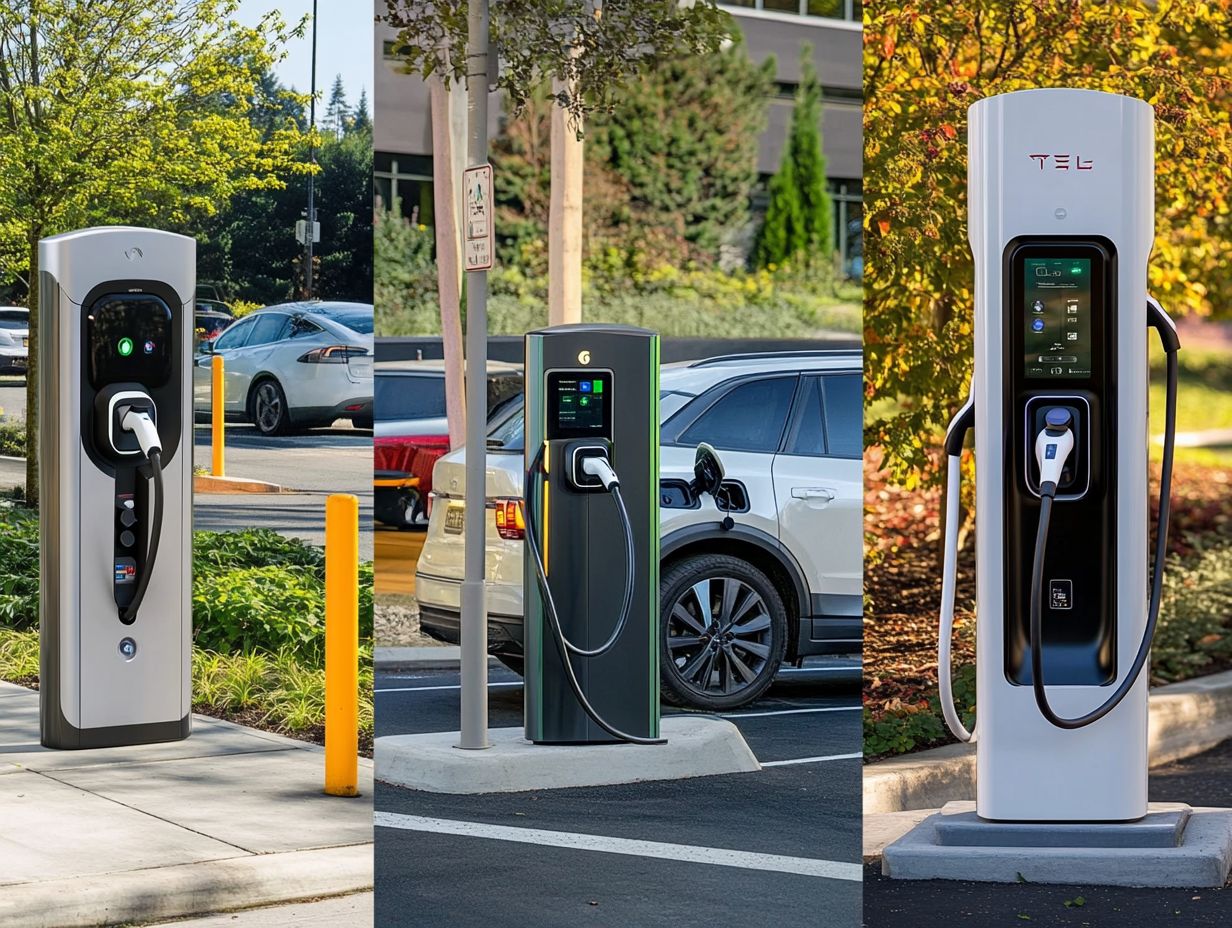
The costs associated with each electric vehicle charging solution can vary significantly. They encompass initial installation expenses, ongoing EV charging costs, and any potential impacts on your home s value all essential considerations for any prospective EV owner.
Understanding these financial aspects is crucial as you contemplate investing in an electric vehicle. For instance, when evaluating home EV chargers, you might find that installation costs can fluctuate widely, especially depending on necessary electrical upgrades. The average electricity rate in your area will also play a key role in ongoing charging costs, ultimately affecting your monthly utility bills.
While the upfront expenses may seem intimidating, remember that the long-term savings from reduced fuel costs and possible government incentives can lead to substantial financial benefits over time. It s vital to analyze the complete picture before making a decision.
What Are the Available Options for Home Charging?
When considering home charging, you have a range of options at your fingertips, including the 5 best electric cars for urban driving tailored to different compatibility types. It’s crucial to explore your installation choices and consult with certified electricians for the optimal setup.
In the competitive landscape of home chargers, the Tesla Universal Wall Connector stands out, boasting seamless compatibility with Tesla models. If you own multiple brands, the Grizzl-E Duo is an excellent choice, as its dual connector capability offers remarkable versatility. For those looking to complement their new purchase, checking out the 5 best electric cars to buy in 2024 can also enhance your charging experience. The JuiceBox 48 distinguishes itself with intelligent features and user-friendly connectivity, ensuring efficient charging for various electric vehicles.
Each of these options has specific installation requirements, often needing a dedicated circuit and adherence to local electrical codes. Understanding these features not only helps you choose the right home charger but also enhances your overall experience as an electric vehicle owner.
What Are the Public Charging Options?
Public charging options for electric vehicles are essential for supporting your long-distance travel and urban mobility. You’ll find a variety of charging networks and connectors, such as NACS (North American Charging Standard) and SAE J1772, designed to meet diverse charging needs.
As electric vehicles gain popularity, the charging infrastructure has adapted remarkably. Now you can easily find the best charging stations for electric vehicles in NYC, from standard Level 2 stations conveniently located in shopping centers and workplaces to high-output fast charging networks strategically placed along major highways.
These fast chargers are game-changers, significantly cutting down wait times and proving invaluable for road trips or those hectic days when you need a quick top-up. For those considering a new ride, exploring the top 5 new electric vehicles can help ensure that you find the right charging option, no matter what brand you drive.
By understanding the various charging speeds and the convenience of different locations, you can greatly enhance your EV ownership experience, making it even more appealing to switch to electric.
What Are the Future Developments in Electric Car Charging?
Future developments in electric car charging are set to change the industry. There is a strong emphasis on enhanced charging hardware, smart home integration, and advanced technologies that improve convenience and efficiency for electric vehicle owners.
Get ready for exciting new advancements! The adoption of super-fast charging stations will significantly cut down on downtime, making long-distance travel a breeze for EV drivers. Imagine a world where wireless charging technologies are not just a dream but a reality, allowing for seamless energy transfer while your vehicle is parked, without the hassle of tangled cables.
The incorporation of renewable energy sources, like solar panels or wind turbines, promises not only to make charging environmentally friendly but also cost-effective. This progression will significantly enhance your experience, as electric vehicle owners will soon enjoy a more reliable and interconnected infrastructure, both at home and in public spaces.
Frequently Asked Questions
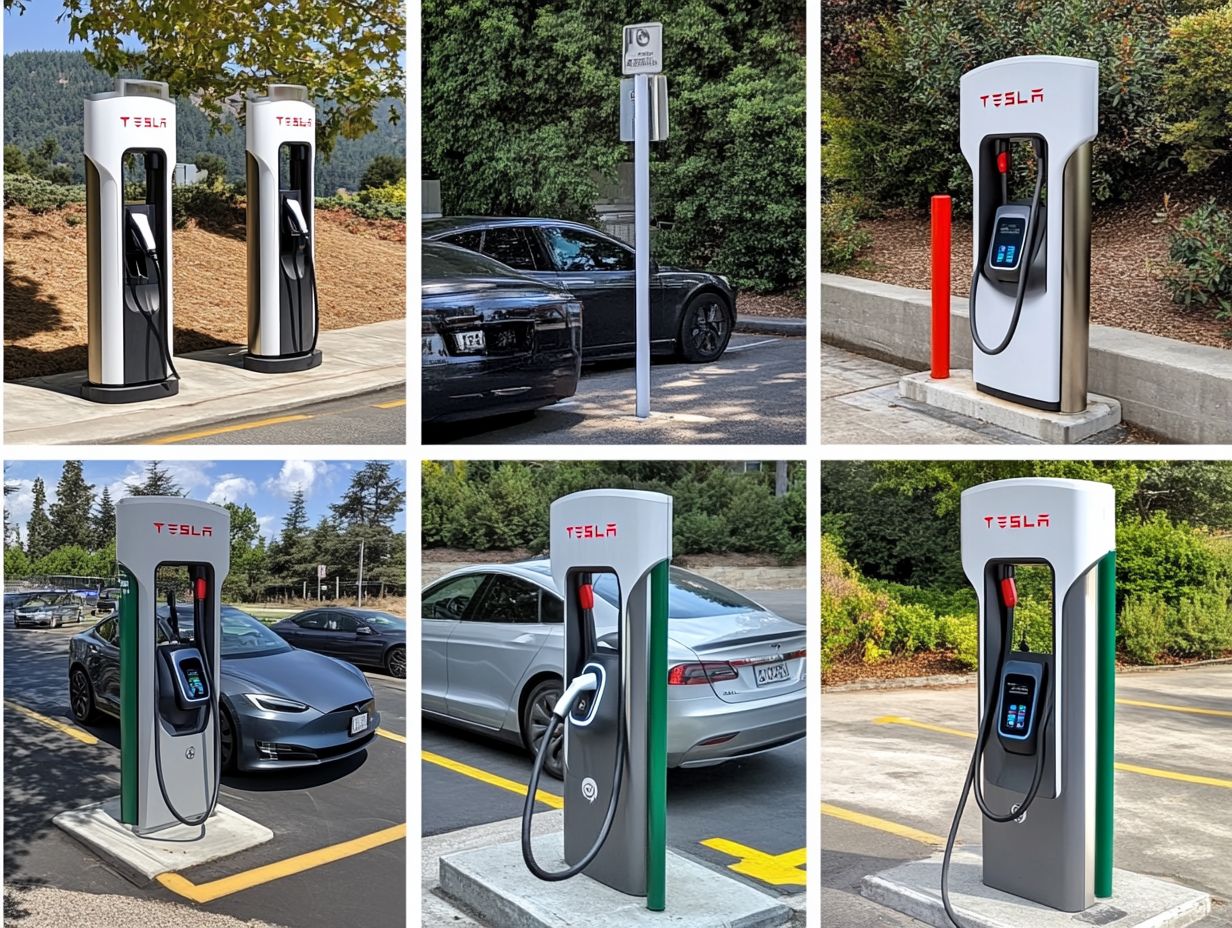
What are the 5 best charging solutions for electric cars?
- Level 1 charging
- Level 2 charging
- DC fast charging
- Wireless charging
- Solar charging
What is Level 1 charging?
Level 1 charging is the slowest but most basic option for electric cars. It uses a standard 120-volt outlet and typically takes 8-12 hours to fully charge an electric vehicle.
How does Level 2 charging differ from Level 1 charging?
Level 2 charging uses a 240-volt outlet and can charge an electric vehicle in 3-6 hours, making it a more convenient option for daily use. It requires a dedicated charging station, which is a specific setup for charging, to be installed at home or at a public charging station.
What is DC fast charging?
DC fast charging, also known as Level 3 charging, is the fastest charging option for electric cars. It can charge a vehicle up to 80% in just 30 minutes, making it ideal for long road trips and quick pit stops.
Can electric cars be charged wirelessly?
Yes, some electric cars are equipped with wireless charging technology. This allows the vehicle to be charged by simply parking over a charging pad, eliminating the need for cords and plugs.
Is solar charging a viable option for electric cars?
As solar technology continues to advance, it is becoming a more viable option for charging electric cars. Solar charging uses solar panels to convert sunlight into electricity, which can then be used to charge an electric vehicle.
Explore more about electric cars and charging solutions to stay informed and engaged!

